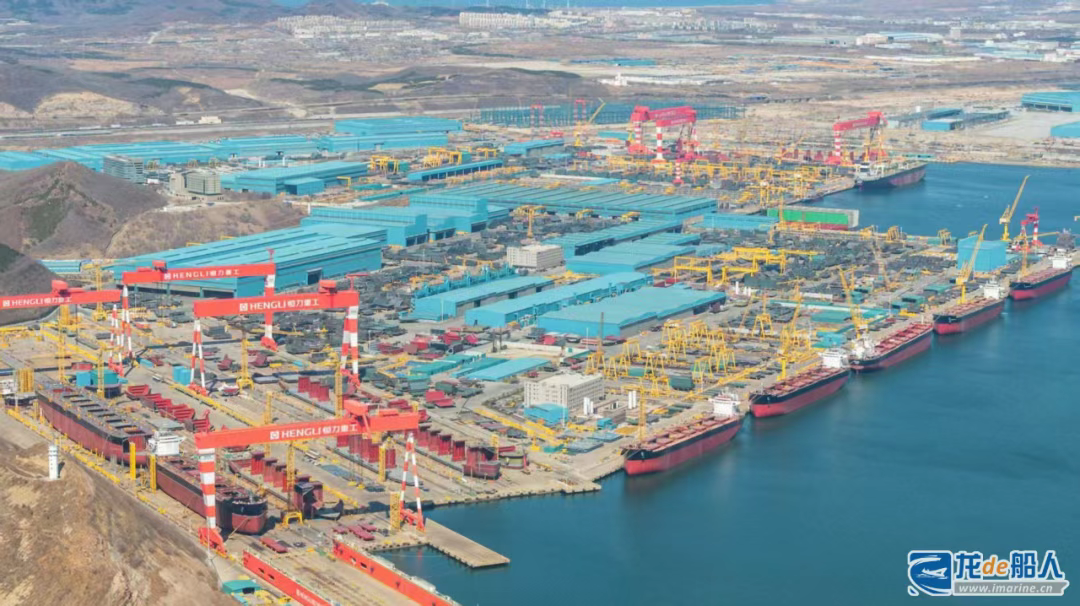In less than half a month since the announcement of the US port fee policy, a number of orders have been announced in the container ship sector, which is most affected by the US tariff and port fee policy, sweeping away the sluggish order trend since March.
Chinese and Korean shipyards continue to compete fiercely for container ship orders. During this period, Chinese shipyards maintained strong competitiveness and won many container ship orders, surpassing Korean shipyards in terms of order volume, container capacity and order value.
It is reported that from April 17 to April 30, in the field of container ships, global liner owners placed orders for a total of 50 new ships with Chinese and Korean shipyards, covering different specifications ranging from 1,800TEU to 22,000TEU.

Specifically, Chinese shipyards received orders for 26 ships with a total capacity of over 450,000 TEUs. On April 22, Mediterranean Shipping Company (MSC) signed a contract with Hengli Heavy Industries for six 22,000 TEU liquefied natural gas (LNG) dual-fuel container ships; on April 29, Shanghai Waigaoqiao Shipbuilding signed a contract with Seaspan, the world’s largest independent container ship owner, for six 10,000 TEU container ships; on April 29, COSCO Shipping Holdings signed a contract with Nantong COSCO KHI Ship Engineering (5 ships) and Dalian COSCO KHI Ship Engineering (9 ships) for a total of 14 18,500 TEU methanol dual-fuel container ships.
Among the new ship orders during the statistical period, the six dual-fuel container ships of MSC are particularly worth mentioning. This is one of the first international shipowners to return to Chinese shipyards to place orders after the adjustment of the US port fee plan, which will send a positive signal for more international shipowners to continue to choose Chinese shipyards for shipbuilding. The six container ship orders signed by Waigaoqiao Shipbuilding and Seaspan innovatively adopt the cross-border RMB settlement model, which is also a counterattack against the hegemony of the “US dollar” and will fully promote the internationalization of the RMB.
During the same period, Korean shipyards received orders for 24 ships with a total capacity of about 136,400 TEUs. On April 28, Capital Maritime of Greece placed an order for four 8,400TEU LNG dual-fuel powered container ships, eight 2,800TEU container ships, and six 1,800TEU container ships; on April 25, Wan Hai Lines, a shipowner in Taiwan, placed an order for four 16,000 methanol fuel reserved container ships; on April 24, Sea Consortium of Singapore placed an order for two 2,800TEU container ships. This series of orders involves three shipyards: Samsung Heavy Industries, HD Hyundai Samho, and HD Hyundai Mipo.
In terms of contract value, during the statistical period, South Korean shipyards accumulated approximately US$2.164 billion; as for Chinese shipyards, the shipbuilding contract of COSCO Shipping Corporation of China alone was as high as US$3.08 billion, and the remaining orders were all for 10,000-TEU container ships. Based on this, it can be inferred that during the statistical period, the total value of orders for Chinese shipyards was at least US$5 billion, more than twice the amount of South Korean orders.
South Korea’s shipbuilding industry has previously claimed that as the United States intensifies its crackdown on China’s shipbuilding industry, South Korea’s shipbuilding industry is expected to regain competitiveness in the container ship sector. However, according to the order data for half a month after the announcement of the US port fee plan, Chinese shipyards still dominate the container ship market, far exceeding South Korea in terms of container volume and contract value.
In addition, the positive trend of international shipowners gradually returning to Chinese shipyards to place orders for shipbuilding has further confirmed HSBC’s previous view that “the strong competitiveness of Chinese shipyards in the global new shipbuilding market is basically unaffected.”
On April 17 of this year, the U.S. Trade Representative’s Office (USTR) announced specific restrictions and fees in response to the 301 investigation into “China’s dominant position in the maritime, logistics, and shipbuilding industries”. Compared to the proposed proposal in February this year, the latest version of the increased pressure on Chinese shipowners and operators, but for foreign shipowners with Chinese-built ships to reduce fees and provide a variety of exemptions. The relatively relaxed restrictions on foreign shipowners are also one of the positive factors driving their return to Chinese shipyards.
Whether it is imposing additional port fees in an attempt to curb China’s shipbuilding industry, or abusing tariffs and other unilateral bullying practices to launch a trade war, China is responding precisely with a tough attitude. The United States will ultimately only “shoot itself in the foot”. Its attempt to revive the U.S. shipbuilding industry by suppressing China will inevitably fail.


